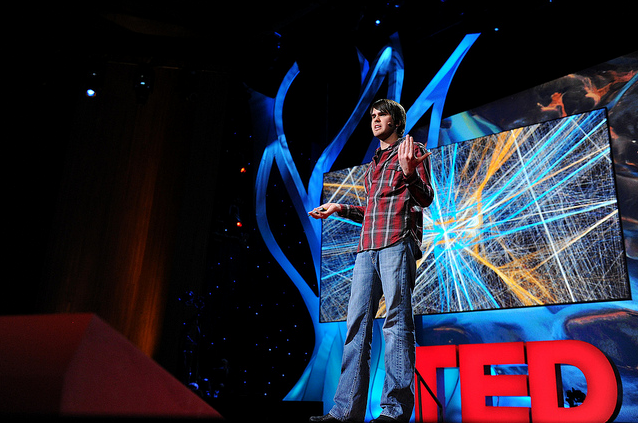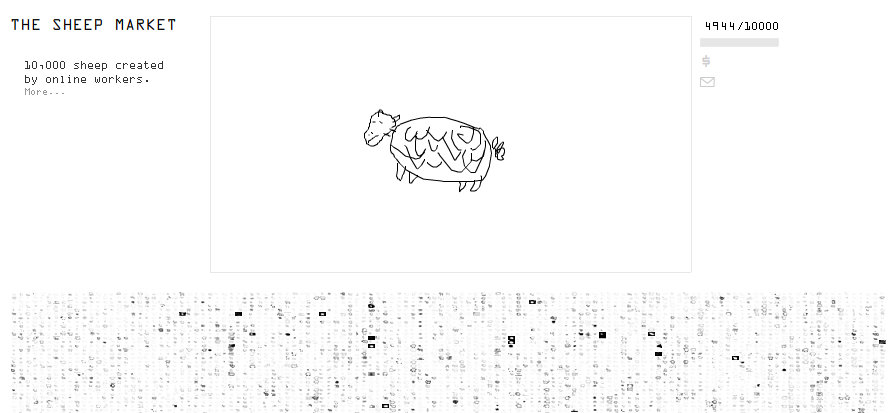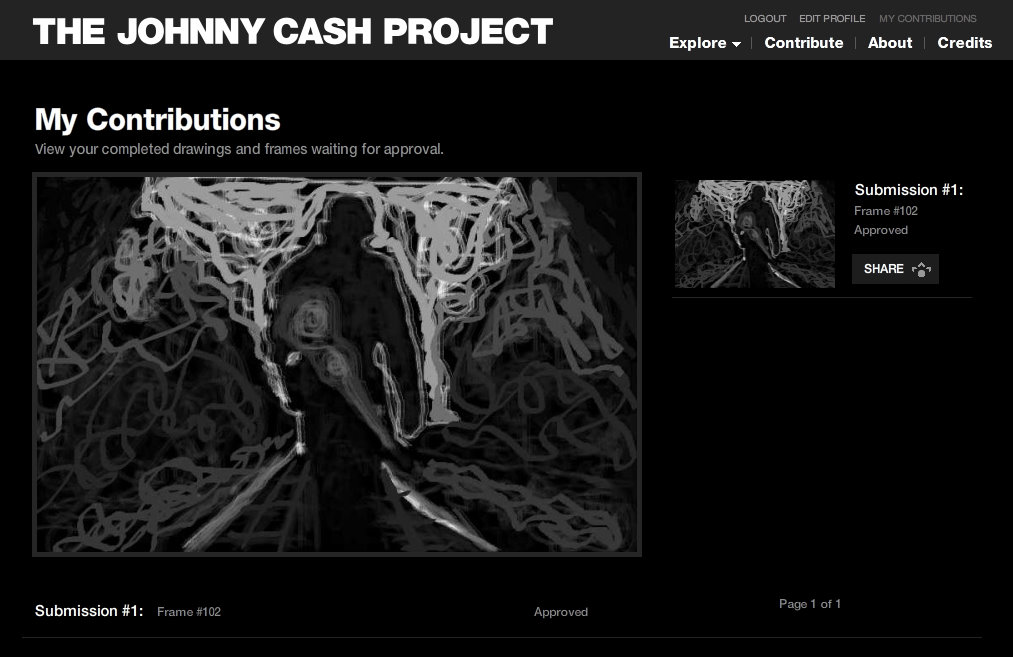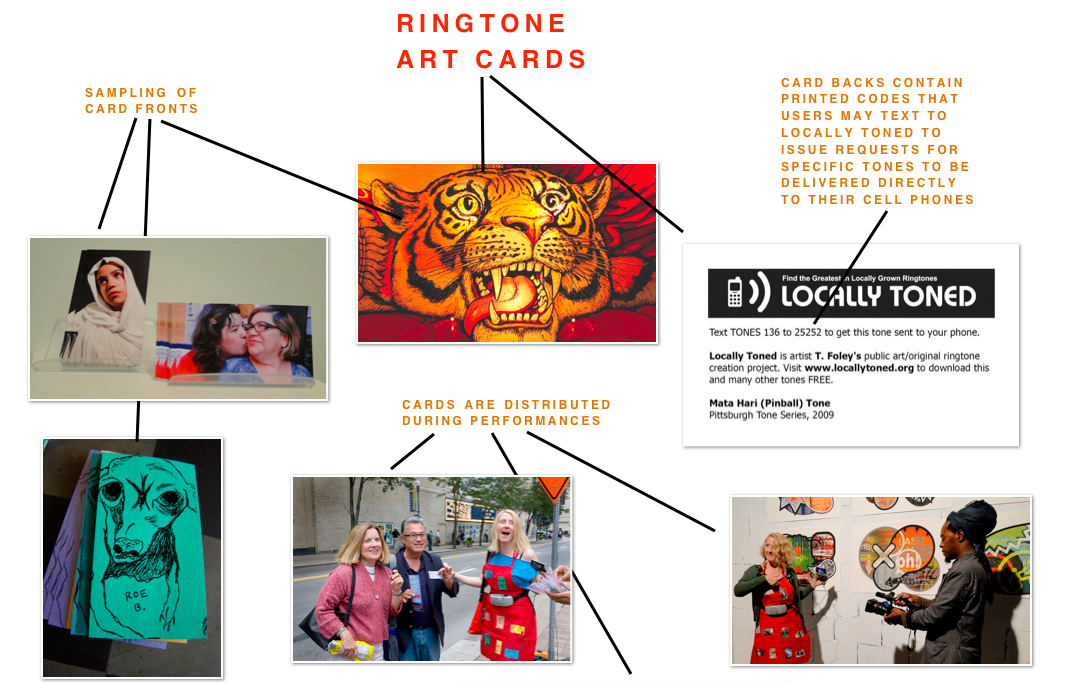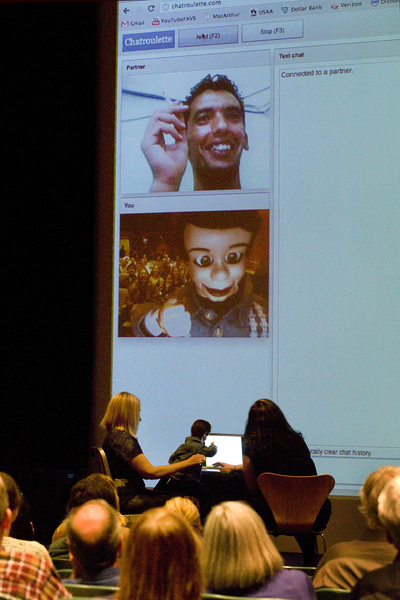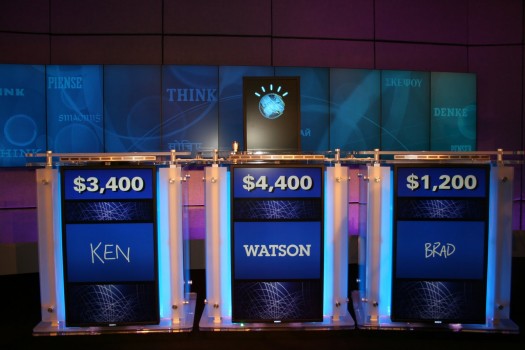The arts and technology communities are coming together this week to explore a new framework which looks at the power of technology through art.
In Case You Missed It - October 2011
 The leaves have fallen down and the air has begun to crack with cold – October is ending! Here’s a look back at some of the big topics our we tackled this month.
Not only does Technology in the Arts recognize the need to protect federal funding for the arts, we also took a look at how artists can protect themselves and their digital intellectual properties.
The leaves have fallen down and the air has begun to crack with cold – October is ending! Here’s a look back at some of the big topics our we tackled this month.
Not only does Technology in the Arts recognize the need to protect federal funding for the arts, we also took a look at how artists can protect themselves and their digital intellectual properties.
From there, we took a look at how the arts and business can cohabitate peacefully with the BMW Guggenheim lab.
We gave everyone some insight about into up-and-coming demographic, The Millennials, and how your organization can reach them.
Of course, all work and no play makes this a boring blog. We discussed how arts organizations can utilize a game dynamic, as well as took a closer look at the mobile app game integrated into the experience of the Tate Modern.
We had loads of great articles this month, and I hope you take some time to check out them all. Enjoy the weekend and have a fun and safe Halloween!
Crowdsourcing Creativity
Online is the New Offline: Trends in Social Media
InSites Consulting is a European consulting firm with offices in Belgium, The Netherlands, United Kingdom, Romania and a soon-to-be office in 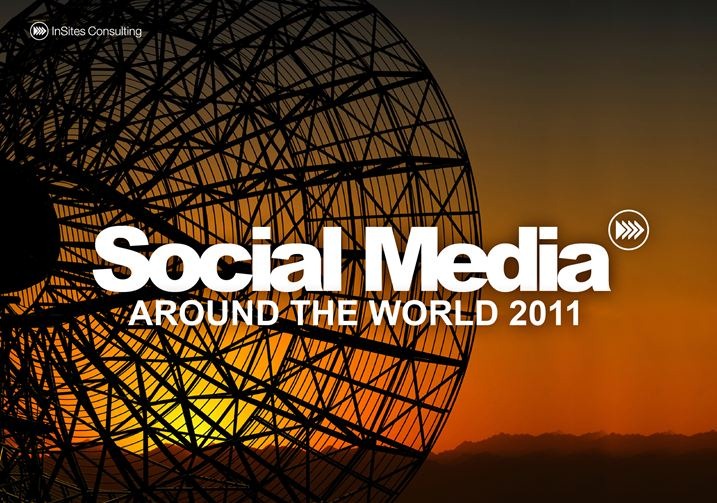 New York. The firm serves various industries from travel to media and retail to health and produces cutting-edge research focused on branding, customer experience, innovation, and marketing insights.
I stumbled upon this InSites presentation (oh happy day), and subsequently, a selection of the firm’s previous presentations (look to the right of the presentation view for additional goodies). It is far too rich in its research, insight and empirical evidence to hoard for myself-it had to be shared.
New York. The firm serves various industries from travel to media and retail to health and produces cutting-edge research focused on branding, customer experience, innovation, and marketing insights.
I stumbled upon this InSites presentation (oh happy day), and subsequently, a selection of the firm’s previous presentations (look to the right of the presentation view for additional goodies). It is far too rich in its research, insight and empirical evidence to hoard for myself-it had to be shared.
Titled “Social Media Around the World 2011,” the presentation supports what we at Technology in the Arts continually emphasize for all organizations in today’s digital age and especially for not-for-profit arts organization: you can no longer ignore the power of social media.
Even in the absence of raw data (for those of us who are skeptical of the methods used to collect the data and the empirical research presented) the message is more than convincing: with such a wide and growing audience, social media is the future of branding, marketing and networking. So, take a look at the presentation and once the shock-factor of what you just read settles, share with us.
With such a high percentage of people around the world already logged in and logged on, how can you maximize the utility of online social networking tools to brand and expand your not-for-profit arts organization?
What Makes Me, innovation from Down Under.
This website is called “What Makes Me”. There are three different sections: What Makes Me, What Makes You, What Makes Us. Each person claims a cube, a cleverly designed multimedia enabled object online and they decorate it with their images, video, and audio files. Each one is very different. The first twelve entries talk about why each individual loves a certain art form or forms - whether it be dance, circus arts, graffiti or something else. All of them are touching and told from the heart. There’s a retired nurse that found out her next door neighbor was a circus performer and has since fallen in love with the circus. There’s a professional rugby driver who drives around looking at the graffiti all over the city. There’s a professional cook who while catering a party, discovered dance for the first time and has since developed a personal relationship with the choreographer.
The common thread that runs between most of these testimonials is the personal connection built with a specific artist or the arts in their neighborhood. It’s about relationships, rather than facilities, and community as the key to these relationships.
The idea around this project was to counteract the perception that the arts in Australia are “associated with images of snobbery and inaccessibility”. The project is run by a company called Wanted Digital and initiated by the Australia Council for the Arts. The participants of What Makes Me are cooperating to build something together- it’s a game. A game that is getting the attention of philanthropic organizations in the US. Wolf Brown recently used this interactive project as an example of participation in the arts in their recent study commissioned by the Jame Irvine Foundation “Getting In On the Act - How arts groups are getting opportunities for active participation”.
What Makes Me is worth taking a second look at. The project engenders enthusiasm that isn’t created from simply being a spectator. Anyone in Australia can be a part of it and there is a hefty presence on the site from diverse populations with Aboriginal people, the disabled, and immigrant communities being well represented. Participants post links to their cube, to their facebook, to their twitter, to other social media sites. The individual act of creation combined with the community have a ground swell effect and foster even deeper love for individual artists and the arts contributions to the community.
Art Meets Technology in New York City
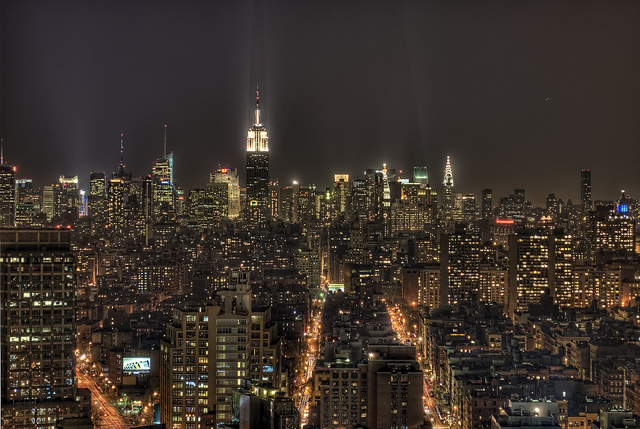 For many of us in the arts community, especially in cities that feature a wide variety of art opportunities to explore, we are often tasked with a dilemma: what is the best way to find not only events that are close to me, but also events that my friends and I will enjoy the most?
As is often the case, this is where technology comes in. The New York Times reported yesterday on a group of young arts professionals in New York City who are using social media to not only find those very events that are the most appealing to them, but also to organize like-minded individuals to join them at the newest buzz-worthy art gallery opening or museum exhibit. The tools and tactics these arts professionals are using can serve as an excellent model for artists and art lovers in any city where the arts are appreciated.
For many of us in the arts community, especially in cities that feature a wide variety of art opportunities to explore, we are often tasked with a dilemma: what is the best way to find not only events that are close to me, but also events that my friends and I will enjoy the most?
As is often the case, this is where technology comes in. The New York Times reported yesterday on a group of young arts professionals in New York City who are using social media to not only find those very events that are the most appealing to them, but also to organize like-minded individuals to join them at the newest buzz-worthy art gallery opening or museum exhibit. The tools and tactics these arts professionals are using can serve as an excellent model for artists and art lovers in any city where the arts are appreciated.
For those who are looking for more targeted art opportunities, there are a number of social media outlets where you can discover more information. The first is Meetup.com, a website where millions of people have created and found scheduled events in their communities. A good section of the site to bookmark is museums.meetup.com, where you will find dozens of groups and thousands of members all across the country who meet regularly and advertise upcoming arts events. For example, here in Pittsburgh one of the many great arts groups is the Pittsburgh Cultural Arts Group, home to 550 members who organize regular arts-related events and shows.
Organizing events and participating in MeetUp activities is not only a great way to find out about upcoming shows; it also serves as a place to meet fellow arts lovers and make contacts in the arts community. Especially for those young people who are either in school or new to a particular city, MeetUp can serve as a conduit to meeting others who share their unique interests. Instead of attending that upcoming exhibit you were looking forward to alone, you know have the opportunity to share the experience with people who share your passion and interests.
So meeting and befriending fellow arts lovers is the first step. Once you have found a group of people committed to discovering the latest and hottest events, what’s next? Instead of using more general platforms like Facebook or even text messages, the young professionals profiled in the NYT piece and many others have used Twitter to share news and events not only with their friends, but with the entire world as well. They use the hashtag #artstech to promote events, share tips and/or links to more information. The great thing about this technology is that it is completely open to everyone: searching for #artstech on Twitter will show you all recent postings by anyone who tweets using that hashtag, whether you follow them on Twitter or not.
The hashtag is one of the most important tools Twitter offers, and you can tailor it to your group’s interests. Are you involved with a small group of museum lovers in Cleveland? Start using the hashtag #ClevelandMuseumLovers when tweeting about local museum events, and as more and more people view the tweet and re-tweet, the more ubiquitous it will become, especially if you have a large Twitter following (for example, one of the hashtags we use here at Technology in the Arts on our Twitter page is #TechArtsReads to share interesting stories about the intersection of arts and technology with our thousands of followers).
But perhaps the best part about using technology and social media to discover new and exciting arts opportunities and events is the ability to use these tools to facilitate and improve the offline relationships that are so important to us. Social media is merely the first important step: meeting new people and developing new contacts is integral to our personal and professional lives, and is bound to open up exciting new opportunities that may not have been available before.
With many museums, arts organizations and galleries using social media to reach out to art lovers, there has never been a better time to use some of these technology tools to better organize and share the exciting new events and opportunities in your area.
What tools do you use to learn about art events in your community, and how do you share this information with fellow arts lovers?
(Photo: CC by Emilio Santacoloma)
Hear Art Everywhere with Locally Toned
It’s a curse of our society. Modern innovation has led to the grotesque abomination, the “cell phone ringtone”. Obnoxious and pervasive at best, invasive and stupid at worst, you will hear them anytime, any place, and might hear one even now (you should get that – I’ll wait). Consider, though, what if cell phone ringtones were art? Sounds can be art, so why can’t the sounds coming out of your phone be works of art? T. Foley, a Pittsburgh based artist, tackles that question with her “public art/original ringtone creation project”, Locally Toned. Users can create and download unique ringtones for free from the Locally Toned website, and to date 11,103 ringtones have been downloaded. I had a chance to speak with Ms. Foley on her work with the ubiquitous ringtone…

Locally Toned Collaborator Krista Martin poses with a ringtone creator at the Uniontown Poultry Association's fall show
Can you speak a little on how your work democratizes art? Why is this important to you? How do you see the Internet as a component of it?
Thanks for visiting with me, Rachael.
I have a background in media literacy, so I’m interested in people having access to a wide variety of media, and the skills and tools that allow them to produce and analyze media for themselves. Locally Toned democratizes art because it’s produced with others and for others. I’m not an artist working alone in a studio producing ringtones to sell to others. I collaborate with people to turn sounds that are meaningful and/or interesting to them into ringtones. This past weekend I went to the Uniontown Poultry Association’s Fall Show in Fayette County to capture bird sounds with the help of that community. And I collaborate with technologists such as Deeplocal and other artists, Encyclopedia Destructica, to get the tones to the public/onto phones. Deeplocal built the technology for the project; Encyclopedia Destructica helped me to design distribution techniques (the ringtone art cards). Unlike paintings or sculptures for sale in a gallery, which many people can’t afford, people may own and share these works free-of-charge.
An example of the ringtone art cards
As conceptual artist Robert Smithson expressed in a 1972 essay entitled “Cultural Confinement,” for Artforum, some works of art, when placed in galleries, loose their charge. Locally Toned is that type of work--one may listen to the tones online, but the real audience for the project exists anywhere a user who’s downloaded the tones receives a call on his/her cell phone. The work performs itself at unexpected times and in unexpected places, outside traditional art spaces (galleries and museums).
My boyfriend likes to say that Locally Toned gives people a “sneak-attack” ability. When some of the more unusual tones go off in public, it creates a little scene. For example, the LRAD tone went off one day on my phone at Deeplocal. The CEO assumed it was a fire alarm and told everyone in to exit the building. I let them know it was a false alarm--I was just testing out the sonic canon ringtone.
The tones function as conversation starters. I often use tones from the Bayernhof Museum. When they go off in public, strangers ask me to identify the sounds. Then I tell them about the nearby museum for mechanical musical instruments. The conversation is usually short, but there’s an unexpected exchange that occurs as a result of the tones.
Ringtones are an invention of modern technology, what drew you to use them as a medium? Is there a benefit to using ringtones in your work as opposed to other technologies?
I had always wanted to make ringtones for my phone, and a “call for artists” from Deeplocal inspired me to develop this project. I was also motivated by a strong dislike for music industry and pre-installed ringtones on cell phones--I wanted to make tones that were more interesting or beautiful. Then I became curious about what other people would do if they had the opportunity to make ringtones. And with my media literacy background, I wanted to model that it’s possible to make and share homegrown ringtones.
I use technology to connect and share with others--recording equipment to make the tones, photography to document the sounds, the Web site to distribute the ringtones, and the Blog to promote the stories behind the sounds that are created. Technology helps to extend my work and ideas out into the world. I like what Lawrence Lessig says about on- and off-line sharing economies in his book Remix (http://remix.lessig.org/).
“Gifts in particular, and the sharing economy in general, are thus devices for building connections with people. They establish relationships and draw upon those relationships. They are the glue of community.”
Locally Toned is public art through service to the community—a series of production, promotion and distribution interactions between the public and myself. New social interaction spaces (physical and cyber) are developed around the making and sharing of these tiny aural documentaries, or soundscape snippets. The tones serve as audio identifiers for members of various communities. A person might identify as a cyclist and download Erok's Bicycle Bell Tone for use on his/her phone. The tones are also plotted on a ringtone map.
Do you see your work moving into other technologies in the future? If so, are there any technologies in particular you would like to explore?
I like to exploit tools that are easy for people to access and use. Recently I’ve created a live and online performance work with Hector, a shy ventriloquist dummy. In The Dummy Is Present, my re-interpretation of Marina Abramović’s The Artist Is Present, 2010, Hector appears on Chatroulette with an audience behind him. The audience appears in the work as spectators and as part of the show. People may sit behind us passively, watching Hector interact with others online (my computer is projected onto a big screen during the performance), or they may become part of the interaction. Some of the people we encounter online say, “Is this for real?!” Audience members respond by shouting or waving a hello, and they may applaud if the other party on Chatroulette performs for us. The performance has been described as voyeuristic, riveting, and magical--it’s all those things and more. I made the work because I wanted to draw attention to contemporary notions of public and private space, and to consider what it means to have an online presence. The Dummy Is Present is part of a larger body of work, Easy Pieces, a series of live and recorded performances featuring a ventriloquist dummy and myself. I’d like to find an interesting application for Twitter within the larger project, but I haven’t figured that out yet.
With Locally Toned and the work with Hector, I use a particular technology so that I may say something about our experiences with it. And I enjoy making work that evolves and changes over time. With both projects, I never know what’s going to happen next--and that’s really fun for me.
The Dummy Is Present - Photo by Larry Rippel
Do you think Locally Toned will ever reach a conclusion?
Locally Toned is an ongoing project. I’m not a Web developer, but I want to be a good shepherd of the project’s technology so that the archive will remain accessible to the public and so that I may add to the collection for years to come. I’m presently seeking funding to make improvements to the Web site, and to release all the tones in the iPhone format. Within the next year, I’d like to identify other cities to collaborate with. The tones are licensed under the Creative Commons Attribution-NonCommercial-Share Alike code, and they show up on other folks’ Blogs. It’s great to see people point back to Locally Toned, and see them re-tell stories about the origins of the sounds.
Ms. Foley is also looking for some Pittsburgh local help with her next project,
Who wants to make a ringtone? This month, I will receive a grant from The Fine Foundation to create a new series of tones from the Pittsburgh region. I’m looking for collaborators. People can contact me by email: locallytoned@gmail.com.
And if you thought her Chatroullete dummy performance sounded cool, Pittsburgh has another opportunity to see it live:
The next performance of The Dummy Is Present will take place at The Warhol Museum on the evening of January 6, 2012. More info can be found at the Ventwittoquisms Tumblr.
---
So what are you waiting for? Go customize your phone with some art!
IBM: A Century of Avant-Garde Thinking
If asked whether data can be beautiful, many of us in the art world would give the questioner a quizzical look. We would then proceed to answer along the lines of “In the art world, we do not ponder over the beauty of data.” But if we were to pose the same question to IBM, they would nod affirmatively. And it bodes well for us to listen to those at IBM because after a century of trial and error, they have agreed to share some of the reasons behind why data is not only beautiful, but also powerful and astonishing. In celebration of a century of avant-garde thinking, the aptly named IBM THINK exhibit is on display at the Lincoln Center in New York. One of the most striking displays is found at the entrance itself; an incredibly beautiful, 123 foot, digital data wall that “visualizes, in real time, the live data streaming from the systems surrounding the exhibit, from traffic on Broadway, to solar energy, to air quality.”
Once inside the exhibit, which is a veritable visual feast, visitors watch a 12 minute film about “awe inspiring stories of the past and the present”; in essence visitors learn about how the advancements made at IBM have shaped the technological course of the 20th century and the opportunities that lie for “making our world better, today.”
- The exhibit concludes with an interactive experience, where visitors can delve into the collective knowledge of the scientific and tech world, from “clocks and scales to microscopes and telescopes, RFID chips and biomedical sensors”, on 40 seven foot screens. Through its data visualization techniques and compelling interactive experiences, the IBM THINK exhibit achieves a rare balance between data analysis and beauty.
http://www.youtube.com/watch?v=JVrXAsYd1Wk
But the overall theme of the exhibit is not limited to the dissemination of data, rather it poses a grandiose and rather formidable question; how do we use the breakthroughs in the fields of science, technology, and leadership to make the planet a smarter place? So while the BMW Guggenheim Lab experimented with making metropolises better, IBM’s sets its sights on the well-being of the entire world. Is that an audacious quest? Not quite, because if IBM were a person, they would have on their resume, a century of experience in changing the world, written under qualifications.
In fact, not only has IBM propelled the world into the 21st century, it continues to build up storms in the ever restive sea of our scientific and technological present. For instance, it’s hard to ignore Watson, the IBM self–contained computer system that proves that computers too are capable of placing themselves in jeopardy. This is because Watson can process natural language and hypothesize between answers, until it arrives at the right answer through weighing different algorithms and determining its confidence level. And Dr. David Ferrucci, the Principal Investigator for the Watson project, is convinced that computer has potential to transform industries such as business and health care.
Let’s also take a look at a technology that may not have created a storm, but perhaps ripples in the much smaller lake of the art world. Earlier this summer, IBM helped the Metropolitan Museum of Art make quantum leaps in art preservation when it installed wireless environmental sensors called Low-Power Motes. These sensors will help the Met monitor the micro-environment through real-time 3D data that will “measure temperature, humidity, air flow, contamination levels, door positions, light levels, and more.” The sensors will help the museum scientists develop correlation models between environmental conditions and the reactions they have on works of art, eventually leading to better models for art preservation.
So in the end, let’s not move forward but backwards. Let’s rewind our clocks back to the year 1911, when IBM’s successor the Computing Tabulating Recording Corporation sold products such as employee time keeping systems, punched card equipment, and of all things, automatic meat slicers! Compare meat slicers to Watson or Low-Power Motes and we can begin to appreciate the beauty of data analysis techniques and technological advancements. We can finally begin to nod in unison with IBM.
The Millennial Generation: We’ve got the power
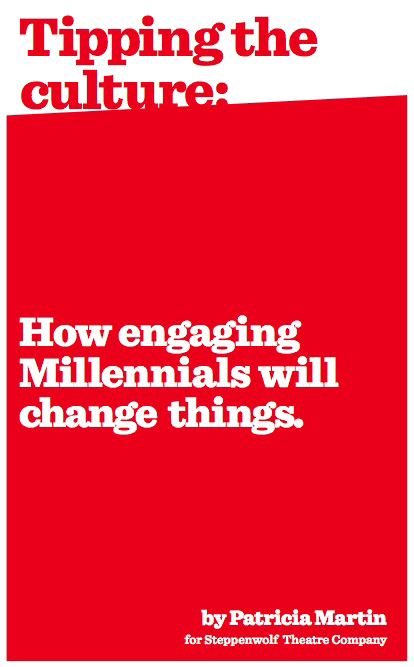 Commissioned by the Steppenwolf Theatre Company, author and culture analyst Patricia Martin recently published the report “Tipping the culture: How engaging Millennials will change things.”Her extensive research on marketing to the generation “eclipsing Boomers and GenX” boils down to the following: the Millennials, those between the ages of 15 and 31, are more networked than any other generation and thus have the power to influence and determine the success and future of an organization.
Between blogs, Facebook, MySpace, Twitter and smart phone applications, the Millennials are here, there, everywhere, with everyone, and telling you about it. Because of this, if you can catch them and grab their attention, they will market your product for you. But this is not news. The folks here at Technology in the Arts have offered compelling reasons beyond the obvious (marketing advantages) why not-for-profit arts organizations should tap into these viral networks.
Commissioned by the Steppenwolf Theatre Company, author and culture analyst Patricia Martin recently published the report “Tipping the culture: How engaging Millennials will change things.”Her extensive research on marketing to the generation “eclipsing Boomers and GenX” boils down to the following: the Millennials, those between the ages of 15 and 31, are more networked than any other generation and thus have the power to influence and determine the success and future of an organization.
Between blogs, Facebook, MySpace, Twitter and smart phone applications, the Millennials are here, there, everywhere, with everyone, and telling you about it. Because of this, if you can catch them and grab their attention, they will market your product for you. But this is not news. The folks here at Technology in the Arts have offered compelling reasons beyond the obvious (marketing advantages) why not-for-profit arts organizations should tap into these viral networks.
Martin takes a look at the big guys, companies like Google, Ford Motors, and J. Crew, to uncover how they successfully snagged the Millennials. How has J. Crew managed to attract and maintain the 22 to 30 year old Millennials? How did Starbucks gain such a loyal following of 15 to 30 year olds? What techniques are these large, for-profit firms using to advance their brand and secure their position in the future marketplace? Using these case studies, Martin provides insight on marketing to this powerful group of young-adults, divulging what attracts them, how to include them, what they are thinking, what they want and how to engage them.
In her easy-to-digest exposé, Martin sheds light on a generation that seeks to both create and consumer content; a generation that is less interested in sitting passively in the audience than being engaged and having their input heard in the creation of the production. Martin offers the not-for-profit arts sector strategies for effective marketing to Millennials through personalized and engaging social media interactions.
So how do Starbucks and J. Crew do it?
1) Making Millennials the priority, then the brand
2) Increasing the firm’s emotional and lifestyle appeal
3) Creating a sense of belonging for customers through participation
What exactly does this mean to a not-for-profit?
Millennials crave connection, whether through broad networks and communities or through exclusive access to content that creates a sense of intimacy.
Translation: Open your backroom doors by posting video footage to Facebook of a “Day-in-the-life” of your museum director, reveal your “behind-the-scenes” preparations for an upcoming exhibition through Facebook status updates and photo uploads, or tweet from back-stage actors’ excitement moments before the opening act. For those of you theater connoisseurs, break the “fourth wall” to show Millennials you understand their desire for access to content and knowledge. Give Millennials the opportunity, through social media, to discover on their own what you are about. Martin describes this as an “egalitarian social model,” where you (the not-for-profit) and the Millennial become connected as friends and collaborators.
Once you have established a relationship with your users online, your work is only half complete. If you encourage participation online, be sure to reinforce your commitment to the Millennials and their contributions on-site by referencing user generated content in your play-bills, gallery maps, and museum guides.
There is a reason why the Broadway musical Rent and primetime TV shows such as CSI and Gossip Girl have gained momentum among Millennials: they are emotiona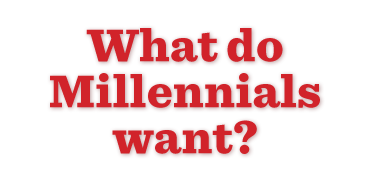 lly charged and engage Millennials in meaningful ways. Creating meaning for Millennials in your not-for-profit could begin with a blog. This forum allows for informal discussion, emotional content, and most importantly, participation. Have your blogger pose questions of substance that encourage meaningful and emotional responses in reaction to a performance or exhibit, such as “Do you agree?”, “What do you think?”, “Tell us how you feel” or “Which character did you relate to most?” By giving Millennials the unadulterated freedom to share their perspective and voice in a dynamic forum, they will have a more personalized experience with your organization.
lly charged and engage Millennials in meaningful ways. Creating meaning for Millennials in your not-for-profit could begin with a blog. This forum allows for informal discussion, emotional content, and most importantly, participation. Have your blogger pose questions of substance that encourage meaningful and emotional responses in reaction to a performance or exhibit, such as “Do you agree?”, “What do you think?”, “Tell us how you feel” or “Which character did you relate to most?” By giving Millennials the unadulterated freedom to share their perspective and voice in a dynamic forum, they will have a more personalized experience with your organization.
Fulfilling the emotional desire of Millennials to be connected, heard, and have meaningful experiences will increase the retention rates for this generation in your organization. It does not require the marketing budget or quarterly revenue of J. Crew or Pepsi, just greater attention to the entire customer experience of your cultural brand (think witty videos for downloading, thought-provoking quotes for Millennials to tweet and a survey to remind them they have a stake in your future).
To the Millennials out there, what social media and technological marketing strategies have won you over? And to the not-for-profit arts organizations, how do you use technology and social media to effectively connect with them?
Faster Than Sound: Pushing The Boundaries of Contemporary Music
While conducting the first round of research for my white paper on online audience development, I stumbled across an exciting development in the world of music. I was first introduced to the genre of contemporary music when I noticed the growing trend of string players and, what sounded like, a classical music influence in many popular indie rock bands. Even though I have background primarily in jazz, both classical and jazz worlds share the same audience development woes. It was both promising and exciting to hear so many young musicians take classical music to new territory. Upon further exploration and research, I discovered that the work of many of these musicians and composers is being labeled as 'contemporary' or 'modern' music.While it can be tricky (and at times unfair!) to attach a definite label to these types of projects, it's important to recognize this growing movement, especially as it pertains to the intersection of arts and technology. Faster Than Sound is yet another great example of this type of project. Faster Than Sound, produced by the UK based Aldeburgh Music, is an experimental and cutting edge series that blurs the boundaries of classical and electronic music. There is a strong emphasis on commissioning new works, artists participating in residencies and innovative collaborations. There is also an emphasis on emerging technology, and all of the artists involved share a common goal of embarking on new musical adventures together.
Earlier this month, composer and visual artist, Christian Marclay, came to the series to develop a specially commissioned work entitled, Everyday. For this endeavor, Marclay collaborated with other musicians including Steve Beresford, John Butcher, Mark Sanders and Alan Tomlinson. Their ensemble also worked with a local marching band and employed the use of turntables. The work was not just limited to music, however. Everyday also combined found film footage sampled from old movies.
The next event in the series, Fall Back will feature a specially commissioned new work that will be created during a week long Aldeburgh Residency. The work will premiere on Saturday, Octover 29 at 8 pm. British dubstep artist, Roly Porter, will be joined by Cynthia Miller for a very special collaboration. The improvisation between these prolific exponents in one of the oldest and one of the newest forms of electronic music is sure to push genre boundaries, and create a truly unique musical experience. The music will be partnered by Rod Maclachlan's epic archaic visual projections.
For a small taste of what the series is like, check out the video above, and visit their Youtube channel! And stay tuned for a special podcast featuring some of the participating artists and creative director.






